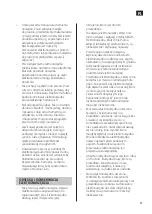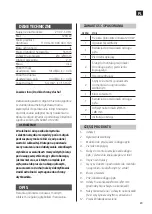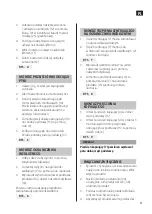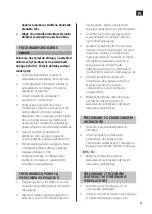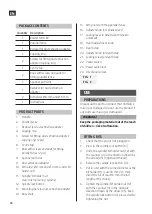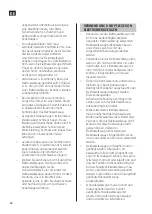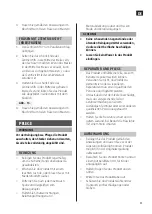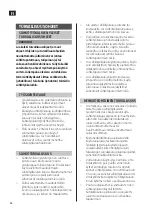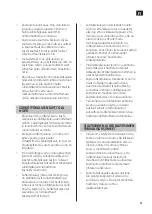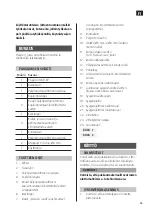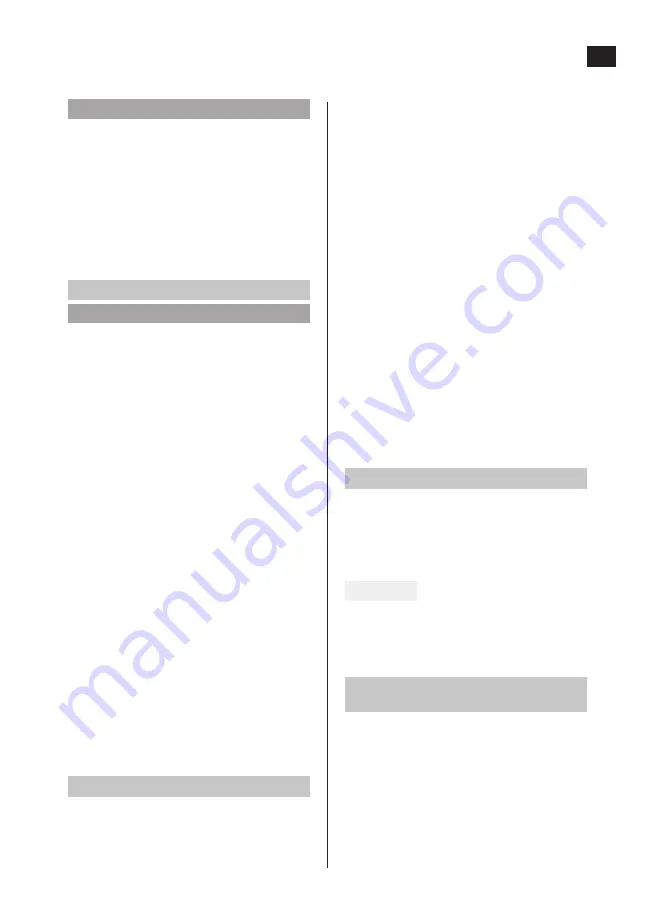
EN
41
IMPORTANT:
• The direction of feed during routing is
very important. The product must be
moved in the opposite direction to the
direction of rotation of the spindle.
The direction of rotation is indicated by
and arrow on the product casing (25).
• Never move the product in the direction
of rotation – risk of kickback.
FREE PATTERN ROUTING
NOTE:
It is recommended that a dust extraction
device, for example a vacuum cleaner,
is connected to the dust extraction adapter
(10). Use the reducer (3) if necessary.
1. Fit the required bit as per the instructions
in the section "Fitting router bits".
2. Set the depth as per the instructions in
the section for "Adjusting the cutting
depth".
3. Put the product on the workpiece and
start it.
4. The product must be able to move up
and down during the work. Release the
locking lever for depth adjustment (18)
by putting it parallel to the rotation axle
of the spindle. The user should be able to
freely lower the bit to the workpiece.
5. Press down the product until the depth
stop (20) reaches the set level for the
depth adjustment dial (19).
6. Pre-rout the groove and lock the locking
lever for the depth adjustment (18).
7. Continue routing with a suitable speed
and the correct direction of feed.
ROUTING WITH COPYING RING
1. Prepare the template the product is to be
put on during the copying.
2. The template must be at least 5 to 6 mm
high. The template should be thick and
smooth enough for the copying ring to
rest against its edge.
3. Fit the copying ring as per the instructions
in the section "Fitting copying ring".
4. Check that the selected bit has a smaller
diameter than the copying ring and that
the cutting edge of the bit is suitable for the
required groove in the material (i.e. larger
than the height of the copying ring (4), the
gap between the spindle nut (12) and the
structural parts of the copying ring).
5. Move the product over the workpiece so
that the protruding copying ring follows
the template smoothly and unobstructed.
6. Carry out the routing with a slight
pressure against the template as per the
instructions in the section on free pattern
routing.
ROUTING WITH PARALLEL FENCE
1. Fit the parallel fence on the product.
2. Put the product on the workpiece so that
the surface of the parallel fence (2) rests
against the edge of the workpiece as
shown.
FIG. 14
3. Carry out the routing as per the
instructions in the section on free pattern
routing.
ROUTING WITH CENTRE TAP
(CIRCULAR ROUTING)
1. Fit the centre tap (7) on the parallel fence.
2. Place the sharp end of the centre tap
in the centre of the circle to be routed.
If the pattern in the centre of the circle
permits, a small hole can drilled so that
the centre tap is more firmly anchored to
the workpiece.
3. Hold the sharp end of the centre tap still
at the centre of the routed circle and
Summary of Contents for 022576
Page 4: ...1 1 A 2 14 18 21 20 16 11 12 19 24 9 17 22 23 13 15 ...
Page 5: ...2 3 4 8 10 11a 11 9 5 3 6 7 2 4 ...
Page 6: ...5 6 7 ...
Page 7: ...8 9 10 ...
Page 8: ...11 12 13 ...
Page 9: ...15 14 R ...

